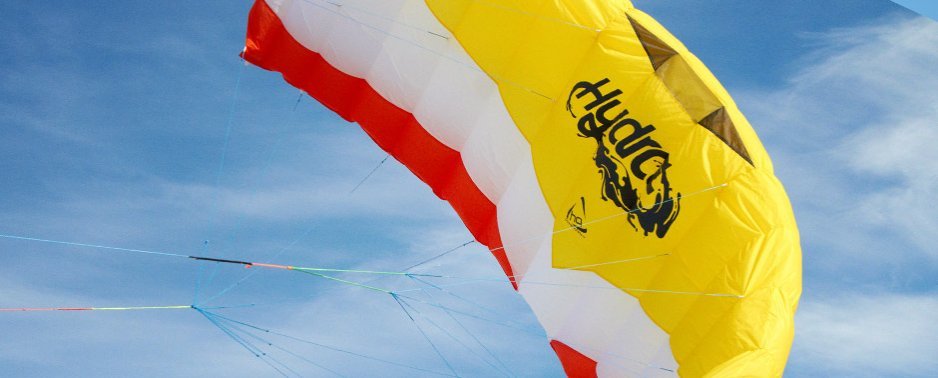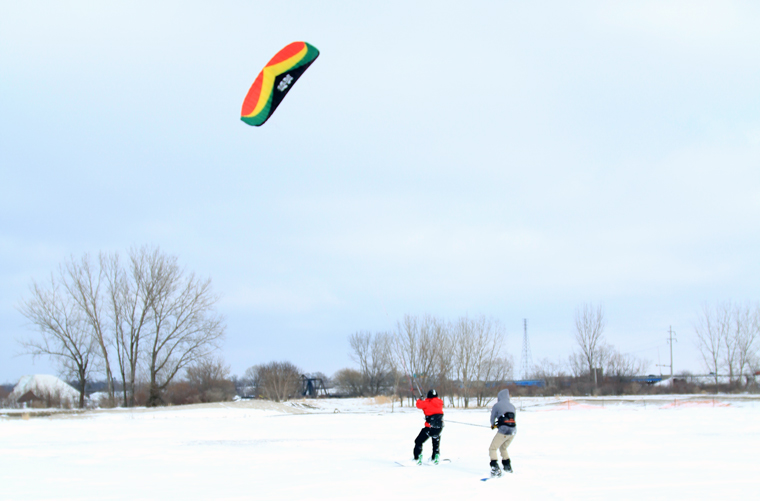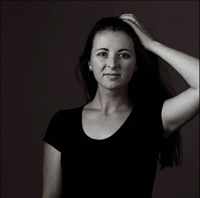Four Reasons to Buy a Trainer Kite & Which One to Buy
Bit by the bug...
I was bitten by the kiteboarding bug on a visit to Tarifa. I returned from Europe and decided to save up for my first kite. It took me all summer, but I managed to snag a 2009 Cabrinha Switchblade from MacKite when it went on sale at the end of the season. Even though everyone recommended buying a trainer kite, I didn't have any extra money to spend and thought it was something I had already outgrown. If I had only known back then what I know now!
The year of the trainer kite
I finally picked up a trainer kite last year, an HQ Rush Pro, because so many of my friends wanted to try flying a kite. I decided I would rather have them crash my foil kite repeatedly into the ground than my Switchblade!
Now that we have a trainer kite, we use it a lot - not just for giving friends a taste of kiting, but also on days where there isn't good wind for kiteboarding. You can have a ton of fun in a deserted parking lot with a trainer kite and a pair of inline skates, but make sure you wear some pads and a helmet. Mountainboarding is another great option for in between the kiteboarding and snowkiting season.
Main types of trainer kites:

There are two main types of trainer kites available: two line or three line. Two lines are the most simplistic (and least expensive), while three line trainer kites have an added safety line that attaches to your wrist. This line allows for you to let go of the bar, immediately depowering the kite. The third line also allows for you to reverse launch your kite by yourself. Despite the fact that three line trainer kites cost a little more, I would highly recommend buying one for this feature alone. We have the HQ Rush Pro 300 and love it. If you are able to afford it, I’d also recommend checking out the Pro School Model, which has a fourth line that allows you to hook in with your harness! A lot of beginners have a hard time learning when to sheet out and in on the bar, so this feature is especially helpful and will translate the best to what you’ll experience on a normal kiteboarding kite.
ICE KITING!
When there isn't enough snow to go snowkiting but the lakes are thick enough to be considered safe, we LOVE being pulled around by our trainer kite on hockey skates! What we really enjoy about this setup is that it hardly takes any wind for you to get moving. It's also probably the least amount of gear you'll ever have to pack to experience kiting. No harness, no board, just a tiny backpack, your skates, and a helmet. This is, in my opinion, the best way to introduce your friends to the sport of kiteboarding.
Ooh la la, foils!

Brad giving a snow kite lesson in a local soccer field.
When you finally get a nice base of snow, you can really start having some fun! For those of you who don’t want to risk damaging your LEI (leading edge inflatable) kites, you’ll want to invest in a four-line foil kite. Foils are extremely durable, very compact, powerful, and major bonus points for not having to pump them up in the winter time (have you ever tried pumping up a kite with cold air?!).
Four line foil kites can be broken down into two categories: open cell and closed cell. Open cells are more common and less expensive, while closed cell foils are water relaunchable (so you can kiteboard with them), handle gusts better, but typically come with a higher price tag. A great entry level four-line foil is the HQ Apex. This kite is a great all-around kite for snowkiting. Despite being an open cell kite, it still feels stable and predictable in gusty conditions thanks to its forgiving aspect ratio.
Never get skunked
If you are looking for the ultimate light wind kite that you can use on the water and on the snow, look no further than the HQ Matrixx. My husband, Andrew, and I recently got out on the water on New Year's day in sub-10mph winds with the 18m Matrixx. Although we had never flown a water relaunchable foil before (let alone one that big), we were really impressed with how responsive and yet still stable it was, despite being an 18m kite. An 18m Matrixx paired with the right directional surfboard could be a real session saver.
If you are thinking about adding some foil kites to your quiver, ask yourself what type of conditions you are mostly going to be riding in and what style of kiting you hope to be doing. The crew at MacKite will happily help you figure out which foil will best suit your needs.
RECAP! Four reasons to buy a trainer kite…
- The ultimate learning tool for you and your friends.
- Parking lot sessions! A deserted parking lot has so much potential...
- Mountainboarding! Just wear lots of padding.
- Ice kiting! Our favorite use for our trainer kite.
 Kalie Walker
Kalie Walker
Growing up in the midwest on an inland lake, wakeboarding was always on the forefront of Kallie's mind. That all changed when she discovered kiteboarding! She is a professional photographer, maker of excellent coffee, and an aspiring ninja.
Jack of all trades, master of some - she's biked 4,000+ miles from Germany to Thailand, enjoys sushi, and is always saving for the next travel adventure. When she's not shooting photos, you're most likely to catch her kiteboarding, cableboarding and helping locals on the beach.
Website: kalliewalker.com
Instagram: @Kalliewalker
Recent Posts
-
Duotone Ventis 2025 | What's New?
If you're familiar with Duotone's Ventis, you know its specialty is freeriding in light wind …23rd Apr 2024 -
Duotone Ventis D/LAB 2025 Overview
If you ride in an area with multiple light wind days and need a wing that'll let you get o …23rd Apr 2024 -
Foil Drive | Essential Maintenance Tips to Help Enjoy Your Ride
Ryan from MACkite takes a few minutes to chat with Ben from Foil Drive and pick up some ti …22nd Apr 2024




